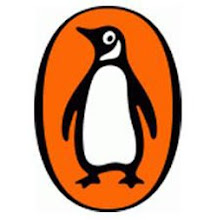
Don’t look for rich Urdu literature in Mir Amman’s Bagh-o-Bahar translated as A Tale of Four Dervishes! The book is not as much a literary fiction as is an interesting tale of five men having suffered through the hands of fate from their women.
A Tale of Four Dervishes was originally written in Persian sometime in the fourteenth century as Qissa Chahar Darvesh by Amir Khusrau. Its first translation (1775) was in chaste Urdu; hence it was later commissioned to Mir Amman to translate the original Persian script in a language that that was simple and easy to read. Interestingly, Mir Amman’s Urdu translation, completed in 1803, made Bagh-o-Bahar popular and also his most celebrated work.
The book is an interesting collection of five main stories of each of its protagonist and several intertwined stories. The underlying theme of Bagh-o-Bahar is romance. The principal characters are four dervishes—three rich princes and a rich merchant—who have renounced the world because of lost love. The central character is Azad Bakht, the middle-age king of Turkey desiring a son to succeed him. Unable to cope up with his grief, he leaves his palace one night and meets the four wandering dervishes who recount their adventurous odyssey to Turkey.
The stories are typically medieval with all the ingredients of a traditional Oriental epic—beauty, valor, love, adventure, and fantasy. The men though brave and strong, are portrayed emotionally weak compared to their women. Each of their stories portray a colorful depiction of the life and times of an era gone by, and its customs and traditions. At times frivolous, the characters nonetheless draw you to their lives and beliefs in their quest to win over their women.
Read A Tale of Four Dervishes during bedtime. It is one of those books with all the feel good ingredients to end your day—djinn and fairies, princes and their adventures, and love and romance.
A Tale of Four Dervishes was originally written in Persian sometime in the fourteenth century as Qissa Chahar Darvesh by Amir Khusrau. Its first translation (1775) was in chaste Urdu; hence it was later commissioned to Mir Amman to translate the original Persian script in a language that that was simple and easy to read. Interestingly, Mir Amman’s Urdu translation, completed in 1803, made Bagh-o-Bahar popular and also his most celebrated work.
The book is an interesting collection of five main stories of each of its protagonist and several intertwined stories. The underlying theme of Bagh-o-Bahar is romance. The principal characters are four dervishes—three rich princes and a rich merchant—who have renounced the world because of lost love. The central character is Azad Bakht, the middle-age king of Turkey desiring a son to succeed him. Unable to cope up with his grief, he leaves his palace one night and meets the four wandering dervishes who recount their adventurous odyssey to Turkey.
The stories are typically medieval with all the ingredients of a traditional Oriental epic—beauty, valor, love, adventure, and fantasy. The men though brave and strong, are portrayed emotionally weak compared to their women. Each of their stories portray a colorful depiction of the life and times of an era gone by, and its customs and traditions. At times frivolous, the characters nonetheless draw you to their lives and beliefs in their quest to win over their women.
Read A Tale of Four Dervishes during bedtime. It is one of those books with all the feel good ingredients to end your day—djinn and fairies, princes and their adventures, and love and romance.

Good review.....even a person who doesn't read Indian authors would feel like picking up this book to read.
ReplyDelete